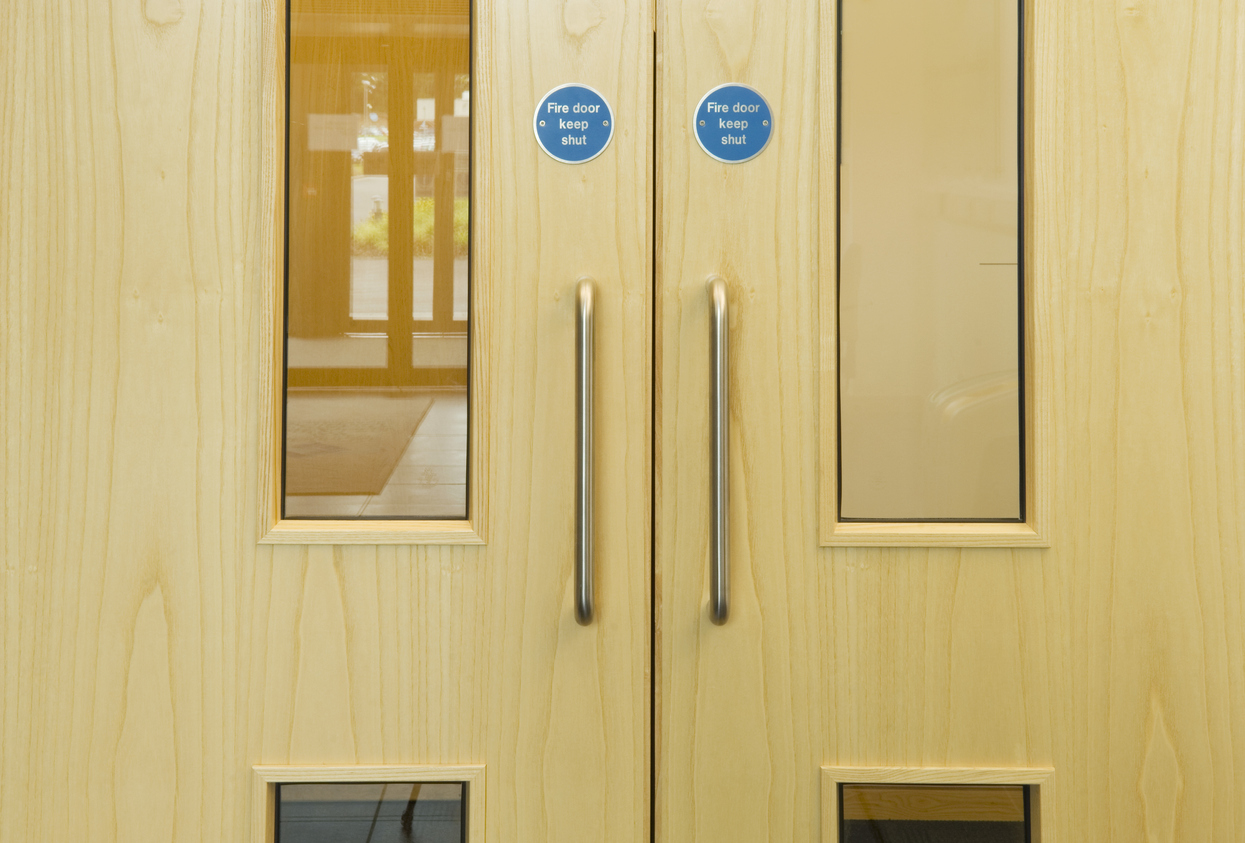Fire Door Inspection Checklist: Your Handy Guide
You walk through them every day and barely give them a thought. And that’s how fire doors should be, since they’re a passive fire protection feature, ready to hold back the flames only when the worst happens.
But given that fire doors help with compartmentalisation and securing evacuation routes out of your building, they need to be kept in the best condition, with any defects dealt with immediately so that they’re always ready. While it may seem like a chore, it’s actually a requirement for the responsible person to carry out an inspection every quarter (once every three months) in multi-occupied residential buildings of over 11 metres in height, as outlined in the Fire Safety Act 2021.
With this in mind, we’ve created a fire door checklist to assist you with your inspection.

What do I need to check on a fire door?
A professional fire door inspection will differ from the kind of inspection that you, as the responsible person, will need to conduct. For your quarterly checks, you need to carry out a visual inspection of your fire doors to ensure any wear and tear is spotted and to maintain your legal compliance.
Below, we’ve got a handy list of things to check on your fire doors.
Fire Door Checklist
Fire doors should be installed by a professional in line with British Standards, but your checks should always be carried out regularly, with the following list of things to run through:
- Door & Frame – Your most obvious checks will come from inspecting the condition of the door itself for damage, such as holes or dents that appear. The same applies to the door frame as this forms part of its fire resistance. Where your door has ventilation panels, are these firmly affixed and free from damage? Finally, does the door catch on any part of the floor or frame? This would render it unfit for purpose and may be down to a wider issue with your building.
- Door Closer – First and foremost, you should check that the door is not being wedged or propped open by other items. You can then assess the door-closing device at the top that allows the door to shut with a firm seal by itself. Test this from different positions (fully open and slightly ajar) to ensure it can overcome any distance by itself without getting stuck or slamming shut. You should also check for a CE marking and any signs of damage to report.
- Hinges & Ironmongery – The mechanical aspects of your fire door include elements like hinges, latches, locks and more. This is known as the ironmongery and hardware and is essential if the door is to work as intended. You should check that all doors have this in place, CE-marked, with the right fire rating to match the door itself, as well as checking for damage overall.
- Certification – Your fire doors should have a label of certification or plug that can be found along the top edge of the door itself. This should then match with the certification documents you hold for the components of your fire door.
- Signage – All fire doors should have a sign on them depending on the type of door per the Health and Safety (Safety Signs and Signals) Regulations 1996. These signs are blue circles on square white backgrounds and detail whether the door should be kept closed or locked, or whether it is an automatic fire door. If you find that these are damaged or missing, then they should be replaced.
- Glazing – Where your fire door has a glazed aperture, you should check its condition. This includes any gaps around the glazing that have appeared or cracks and damage in the pane itself, as this will require professional replacement to maintain the fire resistance of the door.
- Gaps & Intumescent Seals – There should be a consistent gap around the door and the frame to allow it to close by itself smoothly and without catching. This gap is 2-4mm at the top and sides, while the gap under the door can be up to 10mm. In addition to this, you will need to check that the intumescent seals fitted into the door remain in place and are undamaged by regular use of the door.
- Hold-Open Systems – Where your fire doors have a hold-open device or retainer, you should check that they can close freely in the event that the building’s fire alarm is triggered. This device should only ever be a legal, professionally fitted one and the door should not be held or tied open in any way.
How much does a fire door inspection cost?
A fire door inspection from a professional company, such as the team here at Surrey Tech Services Ltd, will of course come with a cost. However, this is a small price to pay to ensure your valuable fire doors are both in top condition and compliant with laws and regulations.
Your price for a fire door inspection will depend largely on how many fire doors there are within your premises. The more doors there are to inspect, the longer the visit from a specialist will take. You can find out more accurate pricing for fire door inspections in London and the Home Counties – including Maidenhead, Guildford and Slough – by contacting us today. We also offer fire door maintenance to help you stay on top of essential repairs and work required for your doors — a handy service if your checks highlight any defects.
Our professional team here at Surrey Tech Services Ltd will be happy to discuss your requirements with the ultimate goal of protecting the people in your building.
